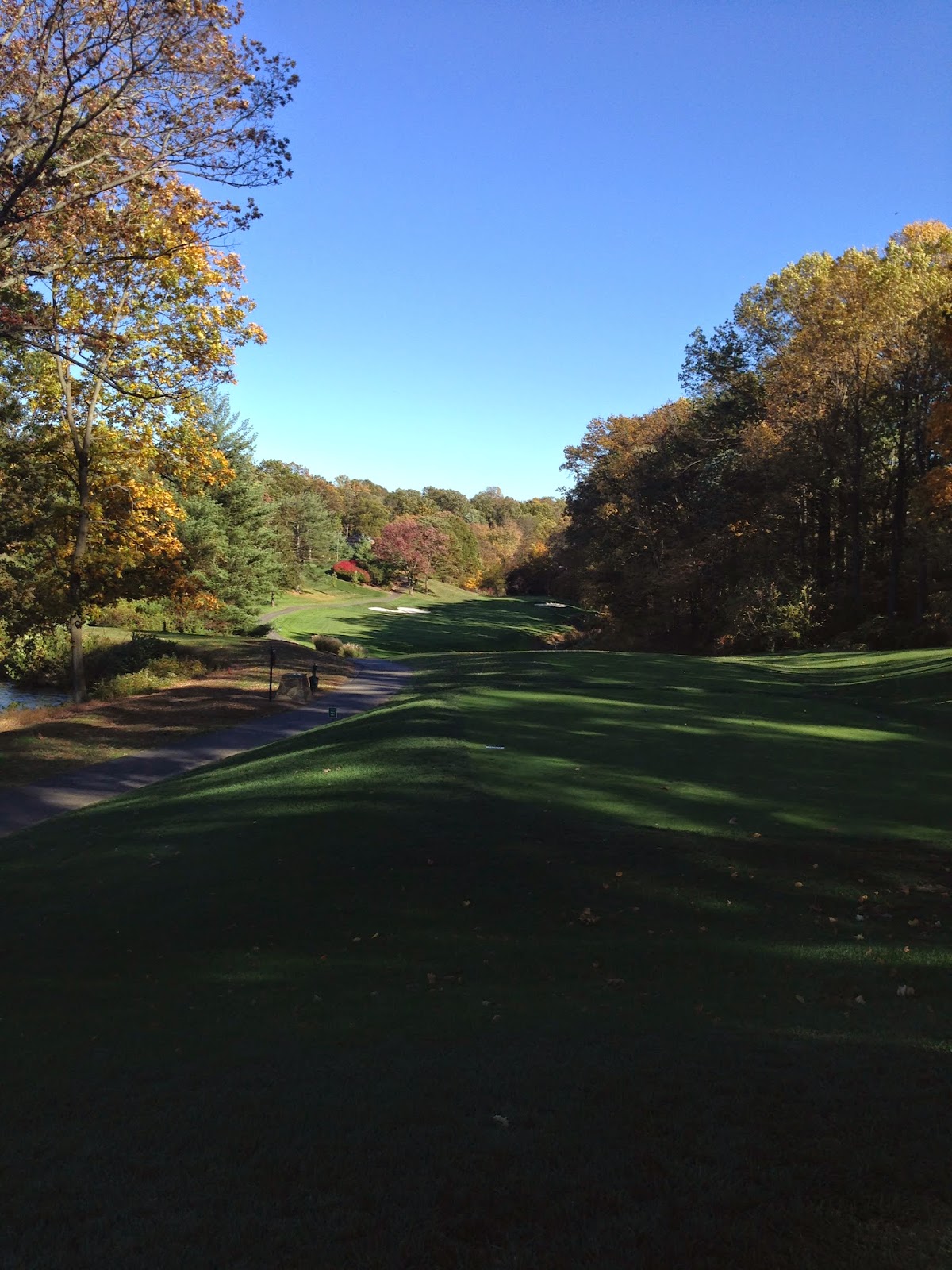There have been many days where carts have been restricted to the path this fall but we have finally dried out!
The fifth hole barely sees the sun this time of year and stays very wet.
There has been lots of positive comments on the condition of the greens. Here Julio double cuts the eighth green in preparation for closing breakfast on Friday. We only mow greens three times a week but roll more often.
His second pass is in the opposite direction. The greens are mowed at the same height throughout the season. Green speed was measured on the practice green at 13 feet!
We are trying to create a small layer of mat in our fairways but have not had much success so far. This is a plug from the third fairway where we did not do any earth work. The soil profile is nice and uniform and has little thatch below the turf line. A little thatch is beneficial but too much is problematic.
This plug is also from the third fairway but is from the area where earth work was performed. Notice the mottled soil from the compost that was incorporated at construction as well as the small area of thatch just below the turf line. Our thinking is that our old soils have plenty of soil microbes that are very efficient in breaking down organic matter (thatch) while the newly constructed area lacks beneficial microbes. We are in search of a happy medium.
The driving range tee has performed admirably this season but is ready to be shut down. Mats only coming soon till spring.
We will begin sodding several weak areas later this month. This is the fifth hole and the light green turf in the rough is called Poa trivialis or roughstalk bluegrass and is undesirable. The dark turf is fescue/blue sod that was sodded last fall. Our hope is to have this type turf around all the fairways.
This is the first hole where we sodded a small section of fescue. The lighter green turf to the left is annual bluegrass invading our newly seeded rough. The sodded turf seems to choke out the annual bluegrass seed found in the soil.
We are beginning to see wooly bear caterpillars as they search for overwintering sites. The caterpillar has a band of red in the center and the narrower the band the harsher the winter. This critter doesn't have any red. Here comes the winter from *^%*$#!!!









.jpg)















